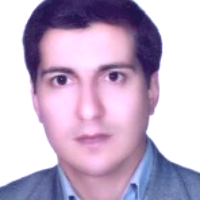Estimation of Maximum Flood in Catchment Area of Namin Using WMS and GIS Models by Applying Probability Distributions
Author(s):
Article Type:
Research/Original Article (دارای رتبه معتبر)
Abstract:
Now there are various models to simulate rainfall runoff. WMS and HEC-HMS models are comprehensive models that by incorporating GIS features can be a powerful tool in the modeling and management of catchment area. The aim of this paper is to estimate maximum flood of Namin catchment at the SCS method with using WMS and GIS by applying probability distributions. First, digital elevation model and catchment waterways network was drawn by using GIS. Then, based on land use maps and properties of soil permeability, catchment store coefficient maps in format of the SCS were obtained and by using WMS software for different return periods of 2, 5, 10, 25, 50 and 100 years, 6 hour rainfall and maximum flood of catchment estimates and are compared with real results. Normal, Gumball and Pearson distributions are used to complete data deficits. Results show that the 6-hours rainfall of the catchment is between 13.7 and 30.1 mm and the maximum flood of the catchment is between 0.2 and 9 m3/s. Comparison of the results show that the log Pearson III distribution has the best fit for real data and the mean relative error for 100 years return period is 0.8 percent that confirm the accuracy of the model.
Keywords:
Language:
Persian
Published:
Iranian Journal of Marine Science And Technology, Volume:26 Issue: 103, 2022
Pages:
30 to 40
https://magiran.com/p2489373
مقالات دیگری از این نویسنده (گان)
-
Use of Stochastic Differential Equations in Investigating the Uncertainties Related to the Operation of the Activated Sludge Wastewater Treatment Plant
Vahid Nourani, Reza Shahidi Zonouz, *
Journal of Civil and Environmental Engineering University of Tabriz, -
Investigation of the Long-Term Performance of Water Distribution Networks in Peak Consumption Conditions by Applying the Uncertainty of Model Parameters and Leakage Variation
*, Parisa Ahadpour
Journal of Water & Wastewater Science and Engineering,


